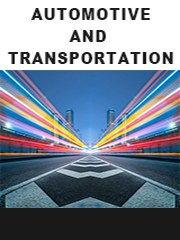Report overview
With the increasing attention of energy saving and emission reduction technology, the electric vehicles affects the development of Construction, Agriculture and Mining industry. Electric vehicles utilizes the electric as the power source integrating the advanced technology of the power control and drive section.
This report aims to provide a comprehensive presentation of the global market for Electric Vehicles for Construction, Agriculture and Mining, with both quantitative and qualitative analysis, to help readers develop business/growth strategies, assess the market competitive situation, analyze their position in the current marketplace, and make informed business decisions regarding Electric Vehicles for Construction, Agriculture and Mining. This report contains market size and forecasts of Electric Vehicles for Construction, Agriculture and Mining in global, including the following market information:
Global Electric Vehicles for Construction, Agriculture and Mining Market Revenue, 2018-2023, 2024-2029, ($ millions)
Global Electric Vehicles for Construction, Agriculture and Mining Market Sales, 2018-2023, 2024-2029, (Units)
Global top five Electric Vehicles for Construction, Agriculture and Mining companies in 2022 (%)
The global Electric Vehicles for Construction, Agriculture and Mining market was valued at US$ 294.9 million in 2022 and is projected to reach US$ 852 million by 2029, at a CAGR of 16.4% during the forecast period. The influence of COVID-19 and the Russia-Ukraine War were considered while estimating market sizes.
Global electric vehicles for construction, agriculture and mining key players include Komatsu, Caterpillar, Hitachi, John Deere, Volvo etc. Global top 1 manufacturer hold a share over 38%. Europe is the largest market, with a share over 38%, followed by North America and Asia-Pacific, both have a share over 54% percent.
In terms of product, hybrid vehicle is the largest segment, with a share over 80%. And in terms of application, the largest application is construction, followed by mining and agriculture.
We surveyed the Electric Vehicles for Construction, Agriculture and Mining manufacturers, suppliers, distributors and industry experts on this industry, involving the sales, revenue, demand, price change, product type, recent development and plan, industry trends, drivers, challenges, obstacles, and potential risks.
Total Market by Segment:
Global Electric Vehicles for Construction, Agriculture and Mining Market, by Type, 2018-2023, 2024-2029 ($ Millions) & (Units)
Global Electric Vehicles for Construction, Agriculture and Mining Market Segment Percentages, by Type, 2022 (%)
Hybrid Vehicle
Battery EV
Global Electric Vehicles for Construction, Agriculture and Mining Market, by Application, 2018-2023, 2024-2029 ($ Millions) & (Units)
Global Electric Vehicles for Construction, Agriculture and Mining Market Segment Percentages, by Application, 2022 (%)
Construction
Mining
Agriculture
Global Electric Vehicles for Construction, Agriculture and Mining Market, By Region and Country, 2018-2023, 2024-2029 ($ Millions) & (Units)
Global Electric Vehicles for Construction, Agriculture and Mining Market Segment Percentages, By Region and Country, 2022 (%)
North America
US
Canada
Mexico
Europe
Germany
France
U.K.
Italy
Russia
Nordic Countries
Benelux
Rest of Europe
Asia
China
Japan
South Korea
Southeast Asia
India
Rest of Asia
South America
Brazil
Argentina
Rest of South America
Middle East & Africa
Turkey
Israel
Saudi Arabia
UAE
Rest of Middle East & Africa
Competitor Analysis
The report also provides analysis of leading market participants including:
Key companies Electric Vehicles for Construction, Agriculture and Mining revenues in global market, 2018-2023 (Estimated), ($ millions)
Key companies Electric Vehicles for Construction, Agriculture and Mining revenues share in global market, 2022 (%)
Key companies Electric Vehicles for Construction, Agriculture and Mining sales in global market, 2018-2023 (Estimated), (Units)
Key companies Electric Vehicles for Construction, Agriculture and Mining sales share in global market, 2022 (%)
Further, the report presents profiles of competitors in the market, key players include:
Komatsu
Caterpillar
John Deere
Hitachi
Sandvik Group
Volvo
Epiroc
Sunward
Merlo
Atlas Copco
Outline of Major Chapters:
Chapter 1: Introduces the definition of Electric Vehicles for Construction, Agriculture and Mining, market overview.
Chapter 2: Global Electric Vehicles for Construction, Agriculture and Mining market size in revenue and volume.
Chapter 3: Detailed analysis of Electric Vehicles for Construction, Agriculture and Mining manufacturers competitive landscape, price, sales and revenue market share, latest development plan, merger, and acquisition information, etc.
Chapter 4: Provides the analysis of various market segments by type, covering the market size and development potential of each market segment, to help readers find the blue ocean market in different market segments.
Chapter 5: Provides the analysis of various market segments by application, covering the market size and development potential of each market segment, to help readers find the blue ocean market in different downstream markets.
Chapter 6: Sales of Electric Vehicles for Construction, Agriculture and Mining in regional level and country level. It provides a quantitative analysis of the market size and development potential of each region and its main countries and introduces the market development, future development prospects, market space of each country in the world.
Chapter 7: Provides profiles of key players, introducing the basic situation of the main companies in the market in detail, including product sales, revenue, price, gross margin, product introduction, recent development, etc.
Chapter 8: Global Electric Vehicles for Construction, Agriculture and Mining capacity by region & country.
Chapter 9: Introduces the market dynamics, latest developments of the market, the driving factors and restrictive factors of the market, the challenges and risks faced by manufacturers in the industry, and the analysis of relevant policies in the industry.
Chapter 10: Analysis of industrial chain, including the upstream and downstream of the industry.
Chapter 11: The main points and conclusions of the report.
